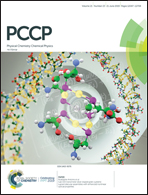A Monte Carlo model for self-assembly of polytetrafluoroethylene nanoparticle films via repulsive electrostatic interactions
Abstract
Self-assembly of polytetrafluoroethylene (PTFE) nanoparticle films on an aluminum alloy substrate under repulsive electrostatic interactions has been achieved experimentally. However, a theoretical framework which is able to accurately predict the self-assembly kinetics based on their underlying mechanisms is not yet available. In this work, we formulate a Monte Carlo model to make predictions on the formation of close-packed monolayer and multilayer PTFE nanoparticle films during repulsive electrostatic self-assembly. In the model, the parameters are obtained from experimental measurements. Our simulation results demonstrate that the layer number of close-packed PTFE nanoparticle films on the aluminum alloy substrate increases with an increase of nanoparticle concentration and an increase of deposition time, which match well with the experimental observations. Beyond this, the underlying mechanism in which the close-packed PTFE nanoparticle film cannot be formed on the Cu substrate was also revealed, which is attributed to the decrease of the substrate repulsive interaction. Hence, the present work not only unveils the self-assembly kinetics of nanoparticle films, but also provides useful guidelines to controllable self-assembly of nanoparticle films with a desired number of layers.



 Please wait while we load your content...
Please wait while we load your content...